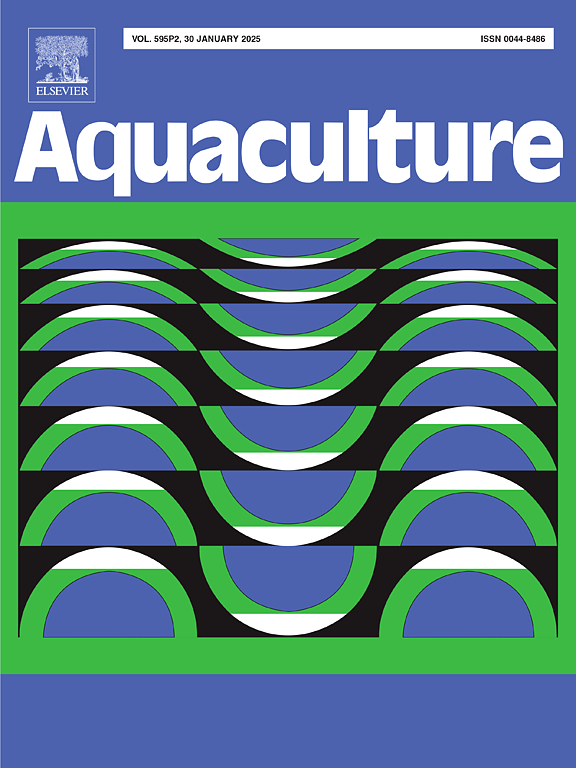银鲳鱼胱抑素基因家族的系统分析:从全基因组鉴定到免疫功能验证
IF 3.9
1区 农林科学
Q1 FISHERIES
引用次数: 0
摘要
半胱氨酸抑制素在调节半胱氨酸蛋白酶活性和免疫应答中起着至关重要的作用。然而,对银鲳鱼中这些蛋白的系统研究仍然有限。本研究从鲳鱼中鉴定并分析了8个半胱抑素基因(Pacystatin A、Pacystatin B、Pacystatin C、Pacystatin F、Pacystatin F2、Pacystatin、kininogen1和kininogen2)。系统发育分析表明,Pacystatin基因在进化过程中具有高度的保守性,而基因结构和基序分析表明它们在同一亚科中具有高度的相似性。在不同组织中检测到Pacystatin基因,显示出组织特异性表达模式。在感染副溶血性弧菌(V. parahaemolyticus)后,Pacystatin基因在肝脏、肾脏和鳃中表现出不同的表达模式,提示其在宿主防御中的不同作用。此外,重组PaCystatin C和PaCystatin F在体外显著抑制木瓜蛋白酶活性,并有效抑制副溶血性弧菌、金黄色葡萄球菌和延迟爱德华菌的生长。值得注意的是,rPaCystatin C和rPaCystatin F在高温条件下仍保持其功能,这凸显了它们作为水产养殖饲料抗菌添加剂的潜力。本文章由计算机程序翻译,如有差异,请以英文原文为准。
Systematic analysis of the cystatin gene family: From whole-genome identification to immunological role validation in silver pomfret (Pampus argenteus)
Cystatins play a crucial role in regulating cysteine protease activity and immune responses. However, systematic studies on these proteins in silver pomfret (Pampus argenteus) remain limited. In this study, eight cystatin genes (Pacystatin A, Pacystatin B, Pacystatin C, Pacystatin F, Pacystatin F2, Pacystatin, kininogen1, and kininogen2) were identified and analyzed in silver pomfret. Phylogenetic analysis revealed that Pacystatin genes were highly conserved during evolution, while gene structure and motif analysis demonstrated their high similarity within the same subfamily. Pacystatin genes were detected in various tissues, which displayed tissue-specific expression patterns. Following Vibrio parahaemolyticus (V. parahaemolyticus) infection, Pacystatin genes exhibited distinct expression patterns in the liver, kidney, and gills, suggesting their diverse roles in host defense. Furthermore, recombinant PaCystatin C and PaCystatin F significantly inhibited papain activity in vitro and effectively suppressed the growth of V. parahaemolyticus, Staphylococcus aureus, and Edwardsiella tarda. Notably, rPaCystatin C and rPaCystatin F retained their functionality under high-temperature conditions, which highlighted their potential application as antimicrobial additives in aquaculture feed.
求助全文
通过发布文献求助,成功后即可免费获取论文全文。
去求助
来源期刊

Aquaculture
农林科学-海洋与淡水生物学
CiteScore
8.60
自引率
17.80%
发文量
1246
审稿时长
56 days
期刊介绍:
Aquaculture is an international journal for the exploration, improvement and management of all freshwater and marine food resources. It publishes novel and innovative research of world-wide interest on farming of aquatic organisms, which includes finfish, mollusks, crustaceans and aquatic plants for human consumption. Research on ornamentals is not a focus of the Journal. Aquaculture only publishes papers with a clear relevance to improving aquaculture practices or a potential application.
 求助内容:
求助内容: 应助结果提醒方式:
应助结果提醒方式:


